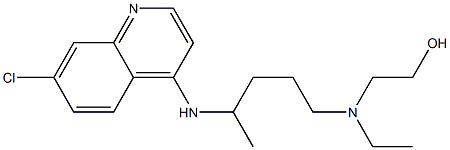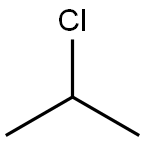2-((4-((7-Chloroquinolin-4-yl)amino)pentyl)(ethyl)amino)ethanol , 98% , 118-42-3
CAS NO.:118-42-3
Empirical Formula: C18H26ClN3O
Molecular Weight: 335.88
MDL number: MFCD00242707
EINECS: 2042498
| Pack Size | Price | Stock | Quantity |
| 250mg | RMB44.80 | In Stock |
|
| 1g | RMB76.00 | In Stock |
|
| 5g | RMB224.00 | In Stock |
|
| 25g | RMB799.20 | In Stock |
|
| 100g | RMB2800.00 | In Stock |
|
| others | Enquire |
PRODUCT Properties
| Melting point: | 89-91° |
| Boiling point: | 516.7±50.0 °C(Predicted) |
| Density | 1.1438 (rough estimate) |
| refractive index | 1.5790 (estimate) |
| storage temp. | Keep in dark place,Sealed in dry,Room Temperature |
| solubility | Chloroform (Slightlly), DMSO (Slightly), Methanol (Slightly) |
| form | Solid |
| pka | 14.76±0.10(Predicted) |
| color | White to Off-White |
| BCS Class | 2 |
| NIST Chemistry Reference | Hydroxychloroquine(118-42-3) |
| EPA Substance Registry System | Ethanol, 2-[[4-[(7-chloro-4-quinolinyl)amino]pentyl]ethylamino]- (118-42-3) |
Description and Uses
Hydroxychloroquine is used to treat autoimmune diseases, such as systemic lupus erythematosus and rheumatoid arthritis, in addition to malaria.
Hydroxychloroquine is a disease-modifying anti-rheumatic drug (DMARD). It regulates the activity of the immune system, which may be overactive in some conditions. Hydroxychloroquine can modify the underlying disease process, rather than simply treating the symptoms.
Hydroxychloroquine is used to treat:
rheumatoid arthritis
discoid and systemic lupus erythematosus (SLE)
juvenile idiopathic arthritis (JIA).
Over the long term hydroxychloroquine can reduce pain, swelling and joint stiffness. If you have lupus, it may also improve the rash. It may be as long as 12 weeks before you notice the benefits.
Safety
| Symbol(GHS) |  GHS07 |
| Signal word | Warning |
| Hazard statements | H302-H317 |
| Precautionary statements | P261-P264-P270-P272-P280-P301+P312+P330-P302+P352-P333+P313-P363-P501 |
| Toxicity | child,LDLo,oral,600mg/kg (600mg/kg),BRAIN AND COVERINGS: INCREASED INTRACRANIAL PRESSUREBEHAVIORAL: CONVULSIONS OR EFFECT ON SEIZURE THRESHOLDCARDIAC: OTHER CHANGES,Journal of Analytical Toxicology. Vol. 14, Pg. 186, 1990. |



